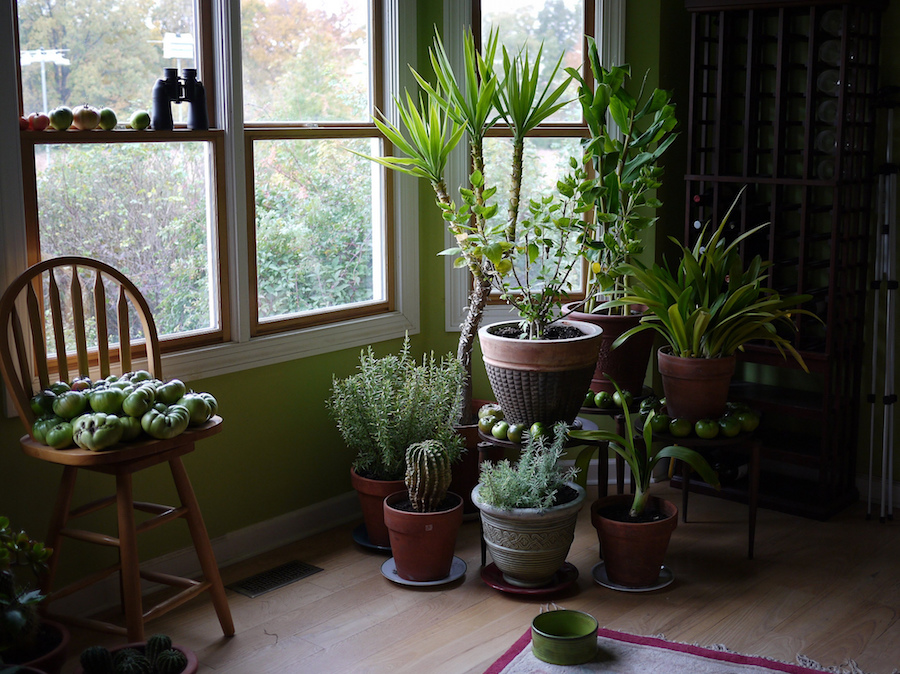Go green with houseplants
Adding a little foliage to the home is one of the most simple ways to spruce up your space.
Whether you were born with a green thumb or can’t keep a basil plant from wilting to save your life, we’ve got the tips and tricks you need to go green with houseplants.
The benefits of houseplants
For most people, keeping houseplants is as simple as enjoying having a little greenery in the home. But there’s a lot of good reasons to keep houseplants beyond the way they look – here’s just a few:
- Increasing oxygen: During photosynthesis, plants breathe in carbon dioxide and breathe out oxygen, helping to keep the air in your home fresh and clean.
- Feel better: Research published in the Journal of Environmental Psychology linked keeping houseplants to feeling better and healing faster from injury. A separate study showed adding plants to office setting decreased a host of common complains including: fatigue, headaches, coughs, sore throats and flu-like symptoms. Likewise, getting outdoors and gardening has been shown to reduce stress and relieve symptoms of depression – keeping plants indoors works in a similar way, helping gradually increase our feeling of wellbeing, particularly during times we’re stuck indoors – like winter – or when our mobility is limited.
- Adding moisture: Grouping several plants together in the same room can help increase its humidity, helping relieve symptoms of respiratory issues. This is especially good for people who suffer from dry skin, colds, sore throats and dry coughs.
Houseplants for beginners
If you’re new to houseplants there are a few things to consider before heading out to your local garden centre. First, think about where you might like to keep them and whether the plant will have access to direct sunlight. Some plants need more sunlight than others to flourish, so it’s always worth keeping in mind.
Some plants are toxic to pets; if you have a cat or dog at home who might end up chewing at your houseplants when you’re not looking, do your research and make sure any plants you choose won’t harm your furry friends.
Look for plants that don’t need too much care or advanced knowledge when you’re first starting out – when you gain in confidence you can gradually start adding more temperamental plants to your collection.
Some safe starters include:
- Spider plant: Adaptable and easy to care for, spider plants thrive with moist soil, comfortable room temperatures and a medium exposure to light. They’re also cat and dog safe.
- Dracaena: This leafy floor plant can help fill up any blank spaces around the home and add a focal point to your room. These plants thrive in dry conditions with plenty of light – like a heated conservatory for example.
- Cape primrose: Also called Streptocarpus, this plant thrives in bright rooms with no direct sunlight – like east and west-facing rooms, for example – and when it can dry out between waterings.
- Snake plant: Ideal for people without access to much natural light – like those living in basements – the snake plant thrives when left alone. It likes dry conditions and barely needs watered, making it a great choice if you’re often away from home or won’t remember to water daily.
For help with the basics, check out this houseplant care guide from Better Homes and Gardens.
Do you keep houseplants? Let us know some of your favourites in the comments below!
Image via Flickr user F.D. Richards
Rachel - Silversurfers Assistant Editor
Latest posts by Rachel - Silversurfers Assistant Editor (see all)
- Mushroom, spinach and egg bake - December 22, 2024
- Religious Christmas Carols Playlist - December 17, 2024
- Classic Christmas family films - December 16, 2024
- Find craft inspiration from the best Martha Stewart videos - December 2, 2024
- Tips for an eco-friendly Christmas - November 23, 2024




















